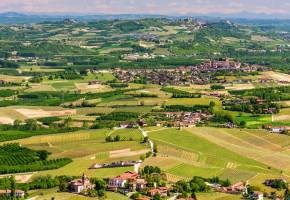Powerful. Affluent. Luxurious. These three words perfectly sum up the city of Florence itself, as well as the family who ruled it during the 15th – 18th Centuries. The Medici family, who became the powerhouse they are known as today through their success in commerce and banking, were famous supporters of the arts, and arguably this interest has made Florence the breath-taking “citta dell’arte” it is today. Here we have two of the very best places to visit if you want to find out more about the Medici family’s presence in Florence, and particularly the family’s influence on the city’s artistic landscape.
Palazzo Pitti
Although the palace was originally built by wealthy banker Luca Pitta in 1458, Palazzo Pitti was later bought by the Medici family and became their residence in Florence until it was donated to the state in 1919. Today, it is open to the public, revealing the splendour in which the dynastic family lived, as well as other artefacts such as silver and jewellery. The palace even houses a modern art museum, and a fashion and costume museum! But the jewel in the crown and the reason for most people’s visits have to be the Galleria Palatina, which displays the Medici family’s illustrious art collection including masterpieces from the 16th-18th Century. The walls are populated with work by celebrated, ingenious painters who have today become household names, from Caravaggio to Tintoretto, Rubens to Van Dyke. But the paintings are not the only exquisite part of your surroundings, as the rooms in which they are hung are each named after one of the Roman gods, and are just as magnificent as their Olympian namesakes. Of particular note are the intricately painted and amazingly preserved ceilings, one of which depicts the return of Ulysses to Ithaca after the Trojan War. This was commissioned upon the return of Duke Ferdinando III of Hapsburg Lorraine in 1814 and is an interesting example of how the Medici family used art, and mythical allusion to advance their status.
 Pitti Palace
Pitti Palace
The Vasari Corridor
Connecting the famous Uffizi Gallery and Palazzo Pitti is the celebrated
Vasari Corridor. The Vasari Corridor was originally designed as
a secret passageway, allowing members of the Medici family to move freely between their residence and the government palace without being bothered by the pesky public! But today, the covered, concealed corridor is open to said public, so they can literally walk in the footsteps of the Medici family, and see some beautiful portraits along the way. The portraits and self-portraits on display include works that were hung by the Medici’s themselves in 17th Century, yet over the years there have been more modern editions, including paintings by 20th Century artists such as Marc Chagall. As well as up-close views of stunning artwork, the large windows in the Vasari Corridor give you incomparable views down
the River Arno. There is also an interesting story behind their presence. They are not of Medici design, but were added by Benito Mussolini in preparation for Hitler’s visit to Florence in 1941!
Photo Gallery












